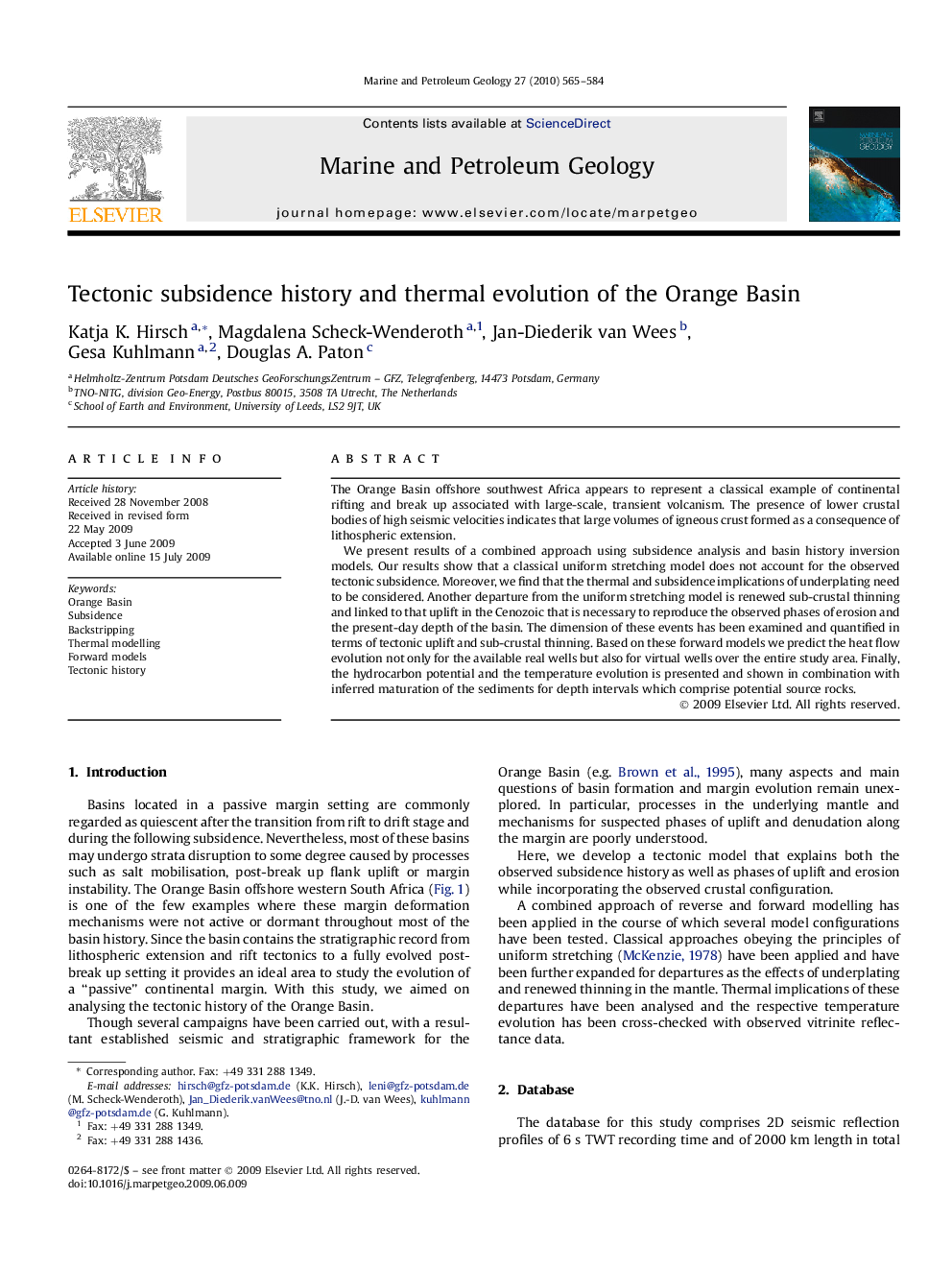| Article ID | Journal | Published Year | Pages | File Type |
|---|---|---|---|---|
| 4696384 | Marine and Petroleum Geology | 2010 | 20 Pages |
The Orange Basin offshore southwest Africa appears to represent a classical example of continental rifting and break up associated with large-scale, transient volcanism. The presence of lower crustal bodies of high seismic velocities indicates that large volumes of igneous crust formed as a consequence of lithospheric extension.We present results of a combined approach using subsidence analysis and basin history inversion models. Our results show that a classical uniform stretching model does not account for the observed tectonic subsidence. Moreover, we find that the thermal and subsidence implications of underplating need to be considered. Another departure from the uniform stretching model is renewed sub-crustal thinning and linked to that uplift in the Cenozoic that is necessary to reproduce the observed phases of erosion and the present-day depth of the basin. The dimension of these events has been examined and quantified in terms of tectonic uplift and sub-crustal thinning. Based on these forward models we predict the heat flow evolution not only for the available real wells but also for virtual wells over the entire study area. Finally, the hydrocarbon potential and the temperature evolution is presented and shown in combination with inferred maturation of the sediments for depth intervals which comprise potential source rocks.
